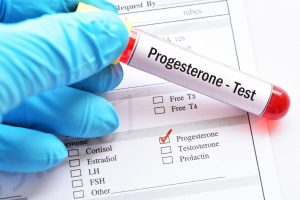Rhabdomyosarcoma: a Childhood Cancer

Rhabdomyosarcoma is a form of cancer most commonly diagnosed in very young children and in adolescents. The cancer affects rhabdomyoblasts in the soft tissues of the body. These specialized cells are responsible for forming skeletal muscles. Although it is still very rare, this is the most common type of soft tissue tumor in children. An estimated 350 cases are diagnosed in the United States annually, according to MD Anderson Cancer Center.
While some children may experience rhabdomyosarcoma without having any risk factors, others may have a family history of the condition. Genetic conditions linked with increased risk for rhabdomyosarcoma include:
- Beckwith-Wiedemann syndrome
- Costello syndrome
- Li-Fraumeni syndrome
- Neurofibromatosis type 1 (NF1)
- Noonan syndrome
- Pleuropulmonary blastoma
Also, children born with a high birth weight may be at an increased risk for rhabdomyosarcoma.
When the condition occurs in children younger than age five, the rhabdomyosarcoma cell type is typically embryonal. These tumor types often develop in the head, neck, genitals, or urinary tract. The other form of childhood rhabdomyosarcoma affects adolescents between ages 15 and 19 and is known as alveolar rhabdomyosarcoma, which usually affects the arms, legs, chest, or abdomen. Embryonal rhabdomyosarcomas typically respond better to treatment than alveolar.
Rhabdomyosarcoma’s symptoms often depend upon the tumor’s location. For example, rhabdomyosarcomas of the bladder may cause blood in the urine.
Doctors diagnose the condition via a variety of methods. The doctor may be alerted that something is amiss if symptoms are out of the ordinary for the age of the child. For example, urinary tract bleeding without trauma or infection that is persistent will trigger a more intense evaluation. This often starts with a physical exam and medical history to determine when symptoms first began. Imaging scans, such as a CT, MRI, bone scan, X-ray, or ultrasound can determine if a tumor is present and if the cancerous cells may have spread to other locations. Blood testing can determine how the body’s organs are functioning and even test for genetic conditions and predispositions that could be risk factors for rhabdomyosarcoma.
If a tumor is located, a surgeon may biopsy, or take a tissue sample from, the tumor. A pathologist can examine the cells to determine if they appear cancerous.
Treatment for rhabdomyosarcoma depends on how significantly the cancer has progressed. The earlier the tumor is diagnosed, the better the survival rate. If the tumor is in a location where a physician can surgically remove the tumor, this is often a course of treatment. Surgery may precede or follow chemotherapy and radiation treatments to kill cancerous cells and shrink the tumor, respectively.
With prompt diagnosis and treatment, the prognosis for rhabdomyosarcoma is generally positive. The five-year survival rate for rhabdomyosarcoma diagnosed in its earliest stages is 70 percent, according to MD Anderson Cancer Center.
Sources:
- Rhabdomyosarcoma.
MD Anderson Cancer Center.
Rhabdomyosarcoma.
National Cancer Institute - Childhood Rhabdomyosarcoma Treatment.
Powered by Bundoo®










